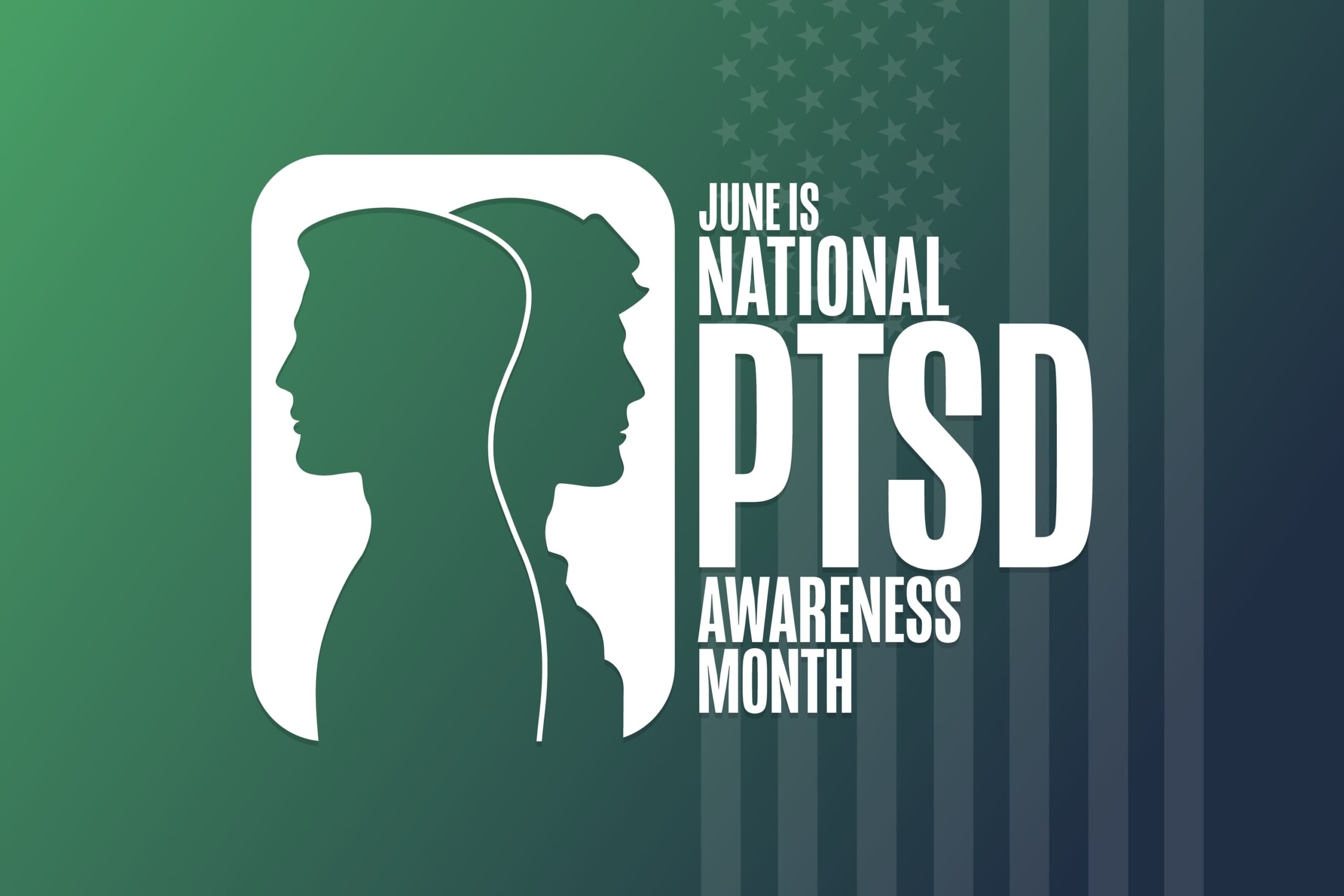June is PTSD Awareness Month, and if you’re reading this, chances are that you or someone you care about has experienced trauma and the symptoms that persist after a traumatic experience. If you’re seeking answers, support, or simply a deeper understanding, this post will walk you through what post-traumatic stress disorder (PTSD) really is. This includes its historical roots, current treatments, and the innovative research shaping its future.
At Wolcott Counseling & Wellness, we understand how deeply personal and complex trauma can be. You are not alone. There is hope. And we are here to help.
What Is PTSD?
Post-traumatic Stress Disorder is a mental health condition that can develop after a person is exposed to a traumatic event. Examples include combat, assault, natural disasters, abuse, rape, or serious accidents. Distress after trauma is normal, but we diagnose PTSD when those symptoms persist, intensify, or interfere with daily functioning long after the danger has passed.
PTSD doesn’t look the same for everyone. For some, it manifests as vivid flashbacks or nightmares. For others, it may present more quietly through emotional numbness, irritability, or persistent anxiety. Others have an exaggerated startle response. These differences highlight just how human and individual this disorder really is.
A Long History of Suffering in Silence
Although PTSD was only officially recognized in 1980 by the American Psychiatric Association, its effects have been described for thousands of years. In Ancient Greece, Herodotus wrote about warriors haunted by their memories. Shakespeare alluded to psychological trauma in several of his plays including Romeo and Juliet and Henry IV. Consider this quote from Henry IV, Part I, written in 1597:
“O my good lord, why are you thus alone?
For what offense have I this fortnight been
A banished woman from my Harry’s bed?
Tell me, sweet lord, what is ‘t that takes from thee
Thy stomach, pleasure, and thy golden sleep?
Why dost thou bend thine eyes upon the earth,
And start so often when thou sit’st alone?
And during the 1800s, traumatized soldiers were said to suffer from “soldier’s heart” or “the thousand-yard stare.”
By World War I, the term “shell shock” entered the public vocabulary. Returning soldiers experienced tremors, nightmares, and emotional withdrawal, and some treatment began. For example, soldiers with shell shock were encouraged to knit to treat their symptoms. (EMDR therapists today recognize this as a precursor to the eye movement therapy that we often recommend for trauma.) But even as labels evolved, recognition of the impact of trauma lagged. Survivors of sexual assault, domestic abuse, and childhood trauma often went undiagnosed, their pain dismissed, invisible or misunderstood.
It wasn’t until the Vietnam War and the social movements of the 1970s that PTSD began to be taken seriously across all types of trauma, not just combat-related. And it was thanks to the tireless efforts of researchers and survivors alike that PTSD finally gained clinical legitimacy.
Recognizing the Symptoms
PTSD symptoms often develop within a month of a traumatic event, though they can also take years to appear. Some people experience constant symptoms, while others go through cycles of relative calm followed by flare-ups.
Symptoms fall into four broad categories:
1. Re-experiencing the Trauma
You may relive the trauma through:
- Flashbacks
- Nightmares
- Intrusive thoughts
- Physical reactions such as trembling, sweating, or nausea
- delusional paranoia
- suicidal ideation and behavior
You might find yourself stuck in a loop of guilt or shame, asking, “Why did this happen to me?” or “Could I have done something to stop it?”
2. Avoidance and Emotional Numbing
To protect yourself from the pain, you might:
- Avoid certain people, places, or conversations
- Shut down emotionally
- Distract yourself with work or isolation
- Lose interest in things you once enjoyed
3. Hyperarousal
Feeling “on edge” is common. You may:
- Be easily startled
- Have trouble sleeping or concentrating
- Feel irritable or have outbursts of anger
4. Other Related Problems
PTSD often coexists with:
- Depression, anxiety, or phobias
- Substance misuse
- Physical symptoms like headaches or stomach aches
- Relationship difficulties or job challenges
PTSD in Children
Children may have trouble sleeping, engage in difficult behavior, or “act out” the trauma in their play. Like adults, they may also experience physical symptoms or withdraw from activities they once loved.
If these symptoms persist for more than four weeks, or significantly disrupt your life, it is important to seek professional help. You deserve care and support.
Effective Treatments Are Available
One of the most hopeful messages to share is this. PTSD is treatable. You may not be able to erase the trauma, but you can learn to manage it and, in many cases, heal from it.
Internal Family Systems (IFS)
Internal Family Systems is a therapeutic model based on systems work that addresses the “internal family” of multiple parts of our brains. We have protector/manager parts, firefighter parts, and exiled parts. Some parts are newer, but many have been around since our childhood and have become extreme or outsized. Our exiled parts hold the painful emotions, memories, or traumatic experiences that were once too difficult to process. Because exiled parts can be difficult to access, they stay stuck, keep our system in a state of reaction/protection/statis and, often, despair. IFS therapy works carefully with the delicate ecology of each client’s inner family system, using somatic techniques, curiosity and compassion to help the client’s parts get to know one another and make room for the true “Self” within that operates from a place of curiosity, compassion, calmness and clarity. Once the energy of the Self is more active in the client’s system, healing of the exiled part is possible and deeply held pain is released in a deep and full level, allowing the system (and the client) to recalibrate and move into the future in new, holistic ways.
Eye Movement Desensitization and Reprocessing (EMDR)
EMDR (Eye Movement Desensitization and Reprocessing) helps people process and heal from traumatic experiences by using bilateral stimulation—often eye movements, sounds, or taps—while focusing on distressing memories. The personalized and targeted process works on specific memories and allows clients to safely work with the stored energy of trauma-related memories and triggers. The EMDR process allows the brain to reprocess traumatic information in a way that reduces its emotional charge and integrates it more adaptively.
Sensorimotor Psychotherapy
Sensorimotor Psychotherapy works with the body to process trauma by focusing on physical sensations, posture, and movement patterns that reflect past experiences. By bringing mindful awareness to these somatic responses, clients can safely release stored trauma and develop new, more regulated ways of being.
Cognitive Behavioral Therapy (CBT)
This approach focuses on how thoughts, feelings, and behaviors are connected. It helps you challenge unhelpful patterns and learn healthier ways to cope.
Cognitive Processing Therapy (CPT)
A form of CBT that specifically addresses distorted thoughts related to the trauma, such as guilt or shame.
Prolonged Exposure (PE)
PE teaches you to gradually face trauma-related memories and triggers in a safe environment. This helps reduce their emotional power over time, and allows healing to occur.
At Wolcott Counseling & Wellness, our therapists are trained in evidence-based approaches and will work with you to find the best fit for your needs and help you heal.
Other Promising Treatments
Not all treatments work for everyone, and that is okay. Other approaches can be very effective, especially when combined with therapy:
- Psychedelic-assisted therapy, such as MDMA-AT and psilocybin
- Narrative Exposure Therapy (NET)
- Medications such as fluoxetine, paroxetine, sertraline, and venlafaxine
A good treatment plan is always collaborative. At Wolcott Counseling & Wellness, we believe healing happens in connection. While we offer a menu of treatment options, we also have a deep bench of referrals we can provide you. Our team will walk that journey with you and at your pace.
The Future of PTSD Care: Precision Psychiatry
The next frontier of PTSD research promises major breakthroughs. The goal is to offer personalized care based on a person’s genetic, biological, and behavioral data rather than relying entirely on reported symptoms.
Researchers are currently exploring tools such as:
- Blood tests to identify genetic markers
- Voice analysis to detect trauma-related speech patterns
- Smartphone data that track behavioral changes in real time
With the help of artificial intelligence and machine learning, scientists are developing models to predict who is most likely to develop PTSD and how to provide the most effective treatment early.
This is the future of mental health care. And it offers tremendous hope.
You Deserve Healing
If you live with trauma, you may have heard you should “get over it” or you may feel ashamed for not “moving on.” But PTSD is not a failure of character. It is a valid and treatable response to overwhelming stress.
There’s no single path to recovery. For some, healing may come through therapy. For others, it might come through community, medication, or self-compassion. Or a combination of all the above. What matters most is that you start where you are and that you do not have to do it alone.
At Wolcott Counseling & Wellness, we are here to support you with compassionate care, clinical expertise, and personalized treatment options and recommendations.
Take the First Step Toward Healing
If you or someone you love is struggling with PTSD, reach out to Wolcott Counseling & Wellness. Our experienced team offers trauma-informed therapy in a safe, supportive environment. You don’t have to face this alone.
Contact us today to schedule a confidential consultation or learn more about our services.


